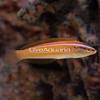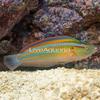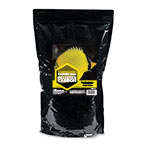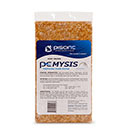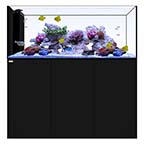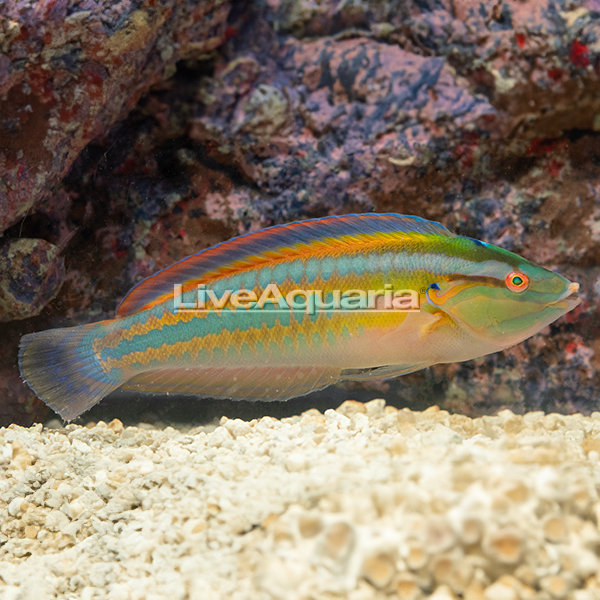
Additional locales and sizes may be available!
Additional locales and sizes may be available! Email me when availableQuick Stats
What do these Quick Stats mean? Click here for more information
What do these Quick Stats mean? Click here for more information
Overview
The Rainbow Wrasse Coris atlantica can be found in nature on rocky shorelines among beds of grass or kelp. It can be kept alone, or in pairs if they are introduced into the aquarium at the same time. The aquascaping should be changed so there are no established territories when new fish are added.
Because the Coris atlantica is born female but has the ability to become male later in life, it has an interesting color story. Juveniles present themselves with a white body and orange horizontal stripes (the white areas contain a hint of the coloration that is needed if it becomes male later in life). When the juvenile reaches adulthood, females will keep their juvenile coloration. Those that become male will present a dynamic palette of blue and green stripes and an orange eye. Males are generally larger than the females.
The aquarium environment in which Rainbow Wrasse live should contain plenty of places to hide or rest. Coral, rocks, and aquascaping can provide shelter and a thick sand bed can provide this marine fish a place in which to burrow. Because Rainbow Wrasse like to swim, the aquarium should contain plenty of room to do so, as well as a lid. When selecting tankmates, be aware that it can harass or harm fish that are smaller than itself as well as small shrimp species.
This member of the Labridae family is a carnivore and will graze on live rock. It should be fed meaty foods like krill, mysis and brine shrimp and crustacean meat more than once per day. Juveniles will eat more frequently than adults, but adults should still be fed more than once per day.
Approximate shipping size: Juvenile 2.75” to 3.5”, Adult 3.5” to 7.5”



